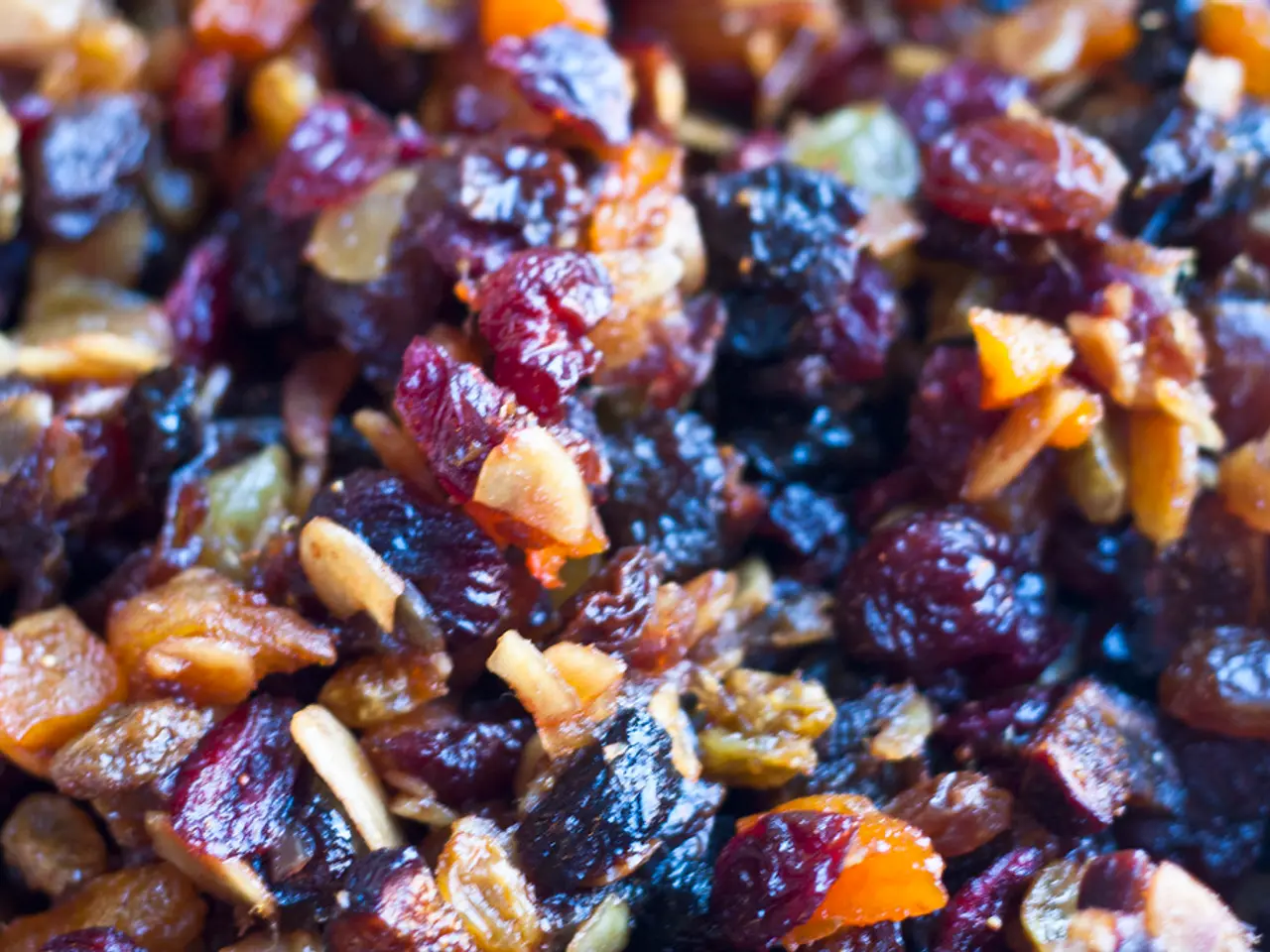Ultra-processed foods are highly manufacture-made food products containing many ingredients, which pose challenges for government regulators, as indicated by initial feedback from the FDA and USDA.
USDA and FDA Seek to Define Ultra-Processed Foods for Public Health and Research
In a significant move, the USDA and FDA have issued a Request for Information (RFI) to establish a federally uniform definition of "ultra-processed foods" (UPFs) [1][2][3][4][5]. This is the first formal federal effort to define UPFs in the U.S. food supply.
The proposed definition approach reflects existing frameworks like the NOVA system, which classifies foods by processing level into four categories [3][5]. Ultra-processed foods are typically characterized by the inclusion of industrial ingredients, sophisticated industrial processing technologies, packaging designed for long shelf life and palatability, and often high contents of added sugars, sodium, and saturated fats.
However, the agencies acknowledge the challenge of distinguishing unhealthy ultra-processed foods from processed foods that may provide health benefits. Avoiding an overly broad definition is a key priority to prevent discouraging consumption of healthy foods [1][4].
The RFI invites public comments on various questions, including which ingredients or processing methods should define UPFs, the health impacts to consider, and implications for labeling and policy [5].
If a federal definition is established, it could lead to substantial impacts on food labeling and public health. A uniform definition would create consistency to guide scientific research and public policy, avoiding a patchwork of state-level definitions [3][5]. Clearer food labeling regulations could help consumers identify UPFs, improving transparency about the healthfulness of foods [2].
The focus on UPFs is linked to the goals of the Trump Administration's broader "Make America Healthy Again" initiative, aiming to reduce chronic diseases such as heart disease, diabetes, cancer, and obesity associated with high UPF consumption [1][2][4][5]. The uniform definition may prompt reformulation of packaged foods by industry to improve public health outcomes.
However, the NOVA system, developed in 2009, has faced criticism for its lack of nuance. Critics argue that it classifies whole-grain breakfast cereals with added vitamins and fortified soy milk in the same "ultra-processed" category as candy, soda, and cookies [6]. Alternative definitions such as "foods with low nutritional value" and those focusing on ingredients found in a kitchen or most grocery stores have been proposed [7][8].
As the deadline for comments on the RFI approaches on September 23 [5], high-profile brands like Amy's Kitchen and Califia Farms are working with the Non-UPF Project to develop a third-party standard for non-ultra-processed foods verification [9]. The current status is that the USDA and FDA are seeking to balance clarity and practicality with nuanced recognition that not all UPFs are equally unhealthy [1][2][3][4][5].
References: [1] https://www.fda.gov/food/newsevents/pressannouncements/ucm814443.htm [2] https://www.usda.gov/media/blog/2025/07/28/usda-and-fda-announce-joint-request-information-establish-federally-uniform-definition-ultra-processed-foods [3] https://www.ncbi.nlm.nih.gov/pmc/articles/PMC6737556/ [4] https://www.foodnavigator-usa.com/Article/2025/07/28/USDA-FDA-to-define-ultra-processed-foods-in-joint-RFI [5] https://www.fda.gov/food/guidance-regulation/rfi-establishing-federally-uniform-definition-ultra-processed-foods [6] https://www.ncbi.nlm.nih.gov/pmc/articles/PMC6737556/ [7] https://www.ncbi.nlm.nih.gov/pmc/articles/PMC6737556/ [8] https://www.ncbi.nlm.nih.gov/pmc/articles/PMC6737556/ [9] https://www.upfproject.org/partners/
- To further promote health-and-wellness, technology may play a role in the definition of ultra-processed foods (UPFs), as public comments on the Request for Information (RFI) consider the implications for food labeling and policy.
- When discussing a consumer's lifestyle, it's crucial to understand the distinction between ultra-processed foods (UPFs) and fresh ingredients, as the proposed federally uniform definition seeks to differentiate UPFs from processed foods that may offer health benefits.
- In the realm of science and nutrition, the debate over the definition of ultra-processed foods rages on, with non-UPF advocates like Amy's Kitchen and Califia Farms promoting third-party verification systems for non-ultra-processed foods, hoping to guide consumers towards healthier food-and-drink choices.




